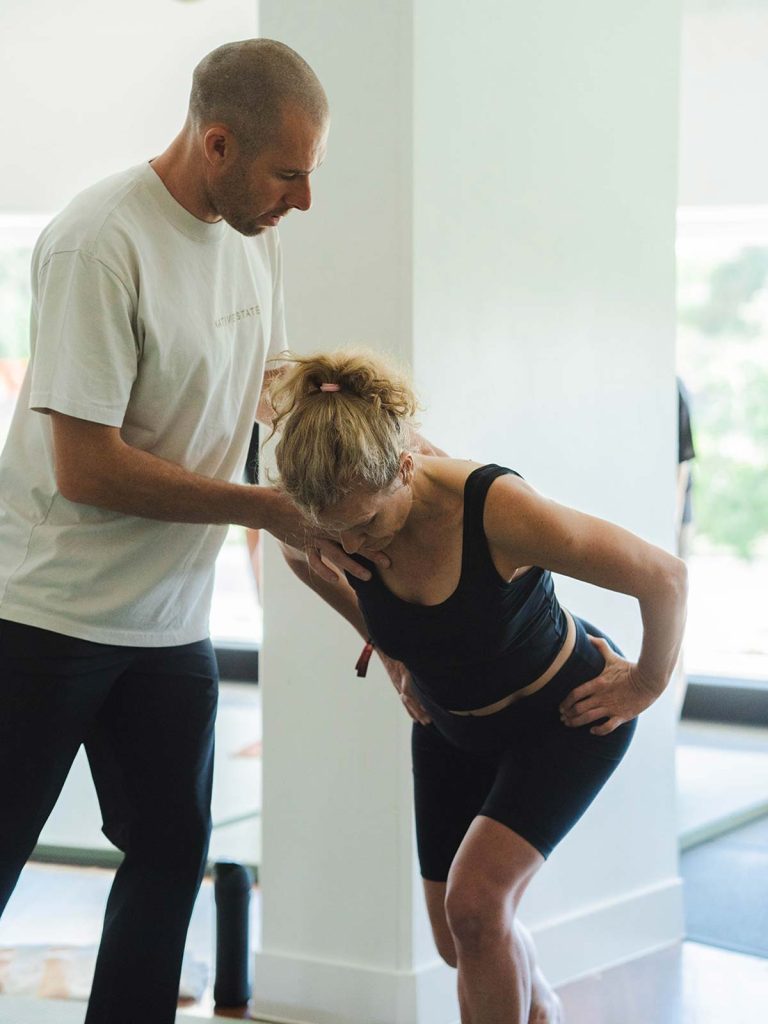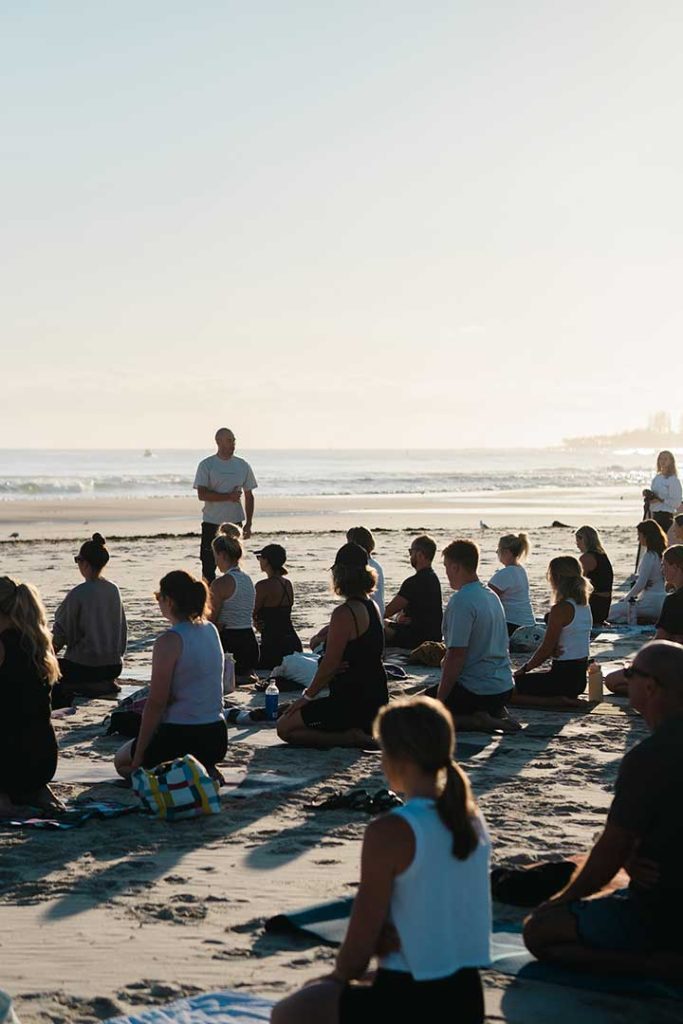Key Takeaways:
- Focus starts in the body, not the brain – when your nervous system feels safe, attention naturally improves.
- ADHD often reflects a nervous system stuck in survival mode (fight, flight, or freeze) – understanding that removes shame and creates a way forward.
- Movement, breathwork, sleep, and nourishment are the building blocks of concentration.
- Sustainable routines are flexible and kind – not rigid or perfection-based.
Some days, focus feels like trying to catch light through your fingers. You sit down to start one task, and your attention scatters in five directions – a message flashes, a thought jumps in, another idea sparks before the first one’s even begun. Hours pass, and somehow nothing feels complete.
For people living with ADHD, this pattern isn’t about effort or intelligence. It’s not a lack of willpower, and it’s certainly not laziness. ADHD is real, and the experience of it can be deeply frustrating – the constant swing between high energy and complete shutdown, the pressure to keep up in a world that moves faster than your brain wants to.
But focus isn’t just a mental game – it’s deeply physical. When your body’s running on stress signals, like caffeine, tension, or adrenaline, your nervous system goes into overdrive. Everything feels urgent, but nothing quite lands. You’re alert, but not present. Then comes the crash – and with it, focus fades completely.
For many of our clients, understanding this connection between the body and attention is the missing piece. It turns the story from “What’s wrong with me?” to “What’s happening for me, and how can I support myself differently?”
Because when you’re operating from a state of constant tension or exhaustion, no amount of strategy can make focus stick. But when the body finds balance, concentration starts to feel steady again.
So rather than treating focus as something you push for, what if it’s something you create space for? What if the key isn’t control, but calm – giving your brain the stability it needs to stay present?
What’s Really Happening When You Can’t Focus
ADHD isn’t a flaw in character or effort – it’s a pattern the brain and body have learned over time. As Dr Gabor Maté shares in Scattered Minds, ADHD is less about a “deficit” of attention and more about how attention is managed. When life feels overwhelming or unpredictable, the body adapts to cope.
Inside all of us is a built-in system that keeps us balanced – it’s what decides whether we’re calm and focused or tense and scattered. When that system senses stress, it automatically shifts into survival mode.
In fight or flight, your mind races. You try to do everything at once, but nothing feels satisfying. In a “freeze” state, you zone out, scroll endlessly, or feel too heavy to start. Both are the body’s attempts to protect you from overwhelm.
The truth is, focus can’t live in chaos. It lives in regulation – that balanced space where your body feels safe enough to slow down and engage.
When we learn to work with our nervous system rather than against it, attention stops being a battle and starts becoming a rhythm.
Focus Is a Body State, Not Just a Mental One
You can’t think your way into focus when your body is stuck in survival mode. The brain simply isn’t wired that way. When stress hormones like cortisol and adrenaline are high, the parts of your brain responsible for planning, memory, and concentration temporarily go offline.
That’s why grounding the body is the first step to grounding the mind. Before lists, before systems, before productivity hacks – you need calm.
A short walk, slow breathing, a proper meal, or a few minutes of sunlight can shift you from scattered to steady.
These aren’t luxuries; they’re physiological cues that tell your brain, “It’s safe to focus now.”
The Foundations That Help You Focus With ADHD
Focus isn’t about doing more; it’s about creating the conditions where doing feels possible. These simple daily foundations can help your body find its rhythm again:
1. Move to Regulate
Movement burns off excess adrenaline and helps the brain release dopamine – the neurotransmitter that supports motivation and focus. You don’t need an intense workout; 10–20 minutes of walking, stretching, or light strength training each day is enough. Keep it consistent, not complicated.
2. Breathe to Reset
Slow, steady breathing brings your system back into balance. Try inhaling through your nose for four counts, and out for six. Do this before tasks, meetings, or when you catch yourself “spiralling”. A few minutes can shift you out of reaction and into presence.
3. Sleep to Repair
ADHD brains crave stimulation, making rest difficult. But without quality sleep, focus unravels fast. Keep bedtime cues predictable – lower lights, fewer screens, softer sounds. Think of sleep as your daily reset button; it’s how your brain files and organises information.
4. Eat to Stabilise
Blood sugar swings mimic attention issues. Balance meals with protein, fibre, and healthy fats to keep your energy levelled. Hydrate well – dehydration shows up as distractibility. Caffeine can help in moderation, but it shouldn’t replace rest or nutrition.
5. Create Calm Pockets of Regulation
Build micro-pauses into your day. Take short breaks between tasks to stretch, breathe, or step outside. This helps prevent overstimulation and keeps your focus sustainable, not forced.
These foundations might sound simple – but they’re the framework that lets every other strategy actually work.
Building Structure Without Overwhelm
Structure can be healing, but only if it feels safe. For many adults with ADHD, strict routines trigger old feelings of failure or pressure. The key is to create frameworks that feel supportive, not suffocating.
Start by choosing one consistent anchor point in your day – something already stable, like your morning coffee or lunch break. Attach one small habit to it: perhaps writing a quick to-do list, setting up your workspace, or doing two minutes of breathwork. This gentle linking builds rhythm without rigidity.
Then, simplify your priorities. Try keeping two lists:
- Today’s One Outcome – the single task that matters most.
- The Holding Pen – where every other idea goes until tomorrow.
This clears mental clutter and replaces overwhelm with clarity. Over time, these small structures create the safety your brain needs to settle into focus.
When Your Mind Freezes
Every person with ADHD knows the freeze – that heavy, foggy moment when you can’t start, even though you want to. It’s not resistance; it’s protection. Your nervous system has decided the task feels unsafe, so it shuts you down to conserve energy.
To gently move through freeze, start with safety, not productivity. Wrap yourself in a blanket, sit somewhere calm, or reach out to someone who feels steady. Notice one sensation – your feet on the floor, the breath at your nose, the weight of your hands.
When you feel a small shift, pick the tiniest possible action: open the document, title the page, write one line. Movement doesn’t have to be big to break the freeze. Once the system feels safe, momentum follows.
What People Discover Along the Way
Many people spend years trying different strategies, wondering why nothing seems to stick. But the deeper they work, the more they realise their ADHD isn’t a personal flaw – it’s a coping strategy their brain built to survive. That understanding alone can lift years of self-judgement.
They also notice something else: once they stop fighting their brain and start caring for their body, things get easier. Small steps suddenly work. Focus feels possible. They begin to feel steady – not perfect, but capable. And that’s the point.
Bringing It All Together – Small Shifts That Help You Refocus
When your nervous system tips into survival mode, it’s easy to feel lost in the moment. Here’s how to meet yourself with care – whether you’re freezing, rushing, or “spiralling”.
1. When You’re in Freeze Mode:
- Wrap yourself in something soft – warmth signals safety.
- Breathe slowly and notice one grounding sensation.
- Start with the tiniest task – open the tab, write one line.
- Use gentle structure – 25 minutes focus, 5 minutes reset.
2. When You’re in Flight Mode (Restless, Avoidant):
- Pause and move your body – a brisk walk or light stretch.
- Switch from mental loops to physical action, even briefly.
- Jot down what’s swirling in your head – then choose one task.
- Set a timer and come back to stillness after moving forward.
3. When You’re in Fight Mode (Irritated, Tense):
- Exhale longer than you inhale – this calms your system fast.
- Take a break from screens or sound – overstimulation adds fuel.
- Reframe urgency – ask, “What’s one thing I can respond to calmly?”
- Let your body lead – shake, stretch, or breathe it out.
These aren’t rules – they’re resets. Simple ways to meet your brain where it’s at and guide it gently back to presence.
Conclusion: Focus Grows Where Safety Lives
If you’ve spent your life trying to figure out how to focus with ADHD, start with your body. Focus isn’t about more willpower – it’s about less chaos. When you feel safe, your brain naturally engages.
Movement, breath, rest, and nourishment aren’t side notes – they’re the main story. They regulate your system, lower stress, and return your attention to the present moment, again and again.
You don’t have to push harder. You just have to create the conditions where focus feels safe to stay.
Private Coaching at Native State: Focus That Feels Possible
You don’t have to navigate ADHD alone, or keep trying one more system that doesn’t stick. With the right support, focus can become something you return to, not something you chase.
Private Coaching at Native State goes beyond productivity hacks. It’s calm, personalised support that helps you regulate your body, restore your energy, and build structure that fits your real life. Through movement, breathwork, sleep routines, and gentle accountability, you’ll learn how to create focus that actually lasts.
If you’re ready to feel clear, capable, and in control again, explore Private Coaching today.



